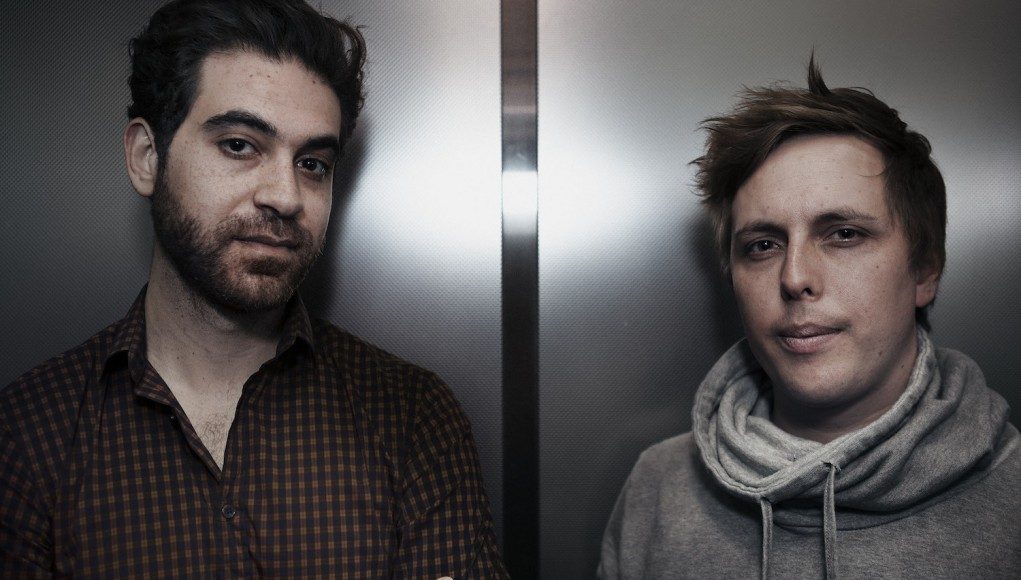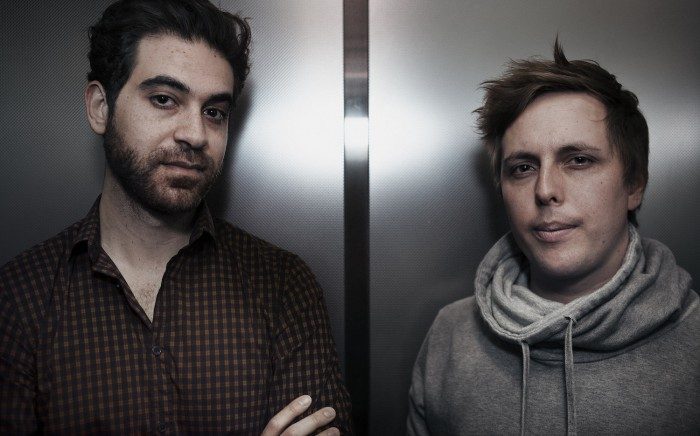‘Look Around’ Video Content Set To Explode
Whilst VR is generally a 360 degree experience, traditional filmmakers and production companies are exploring how 360 degree video can revolutionize storytelling and make a viewer feel more emotionally involved.
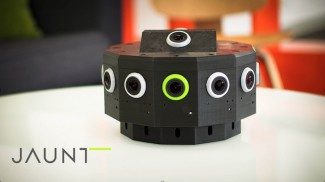
Last week, Jaunt VR announced a $6.8 million investment to develop a virtual reality cinema toolset, having previously secured a modest cash injection from British broadcaster BSkyB. This news has led many to speculate that ‘look around’ content could be the next big thing to engage TV viewers (perhaps where 3D didn’t), either as stand-alone content, or as bonus features to download from show’s micro-site (imagine being in the heart of an arena in a scene from Spartacus?).
Atlantic Productions, best known for big budget award winning 3D documentaries hosted by David Attenborough (Flying Monsters, 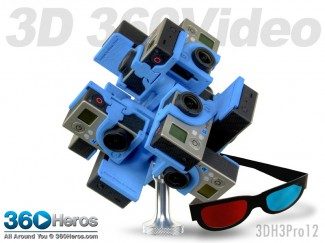 Galapagos), has been experimenting with the format and Total 360 Cinema are currently in the editing stage on a romantic comedy which they claim to be the first fictional narrative told in 360 for VR.
Galapagos), has been experimenting with the format and Total 360 Cinema are currently in the editing stage on a romantic comedy which they claim to be the first fictional narrative told in 360 for VR.
In February, creative production company Inition worked with retailer Topshop to launch a new menswear collection via a live 360 degree VR installation. Five competition winners watched a catwalk show as it happened live, several miles away. Other features included 360 timelapse stills of the ordered chaos backstage, and floating CG leaves superimposed with real-time Tweets.
Hardware manufacturers are ready to give people the tools to produce their own wrap-around content. In July, 360 Heros will launch a device capable of capturing 3D 360, Geonaute’s 360 Video Camera pack promises high resolution 360 degree capture at 25fps and the quirky looking Bublcam will feature live streaming functionality. Panocam 3D in particular show promise in bringing UltraHD stereoscopic 360 video recording and stitching to creatives.
Felix and Paul and ‘Once’
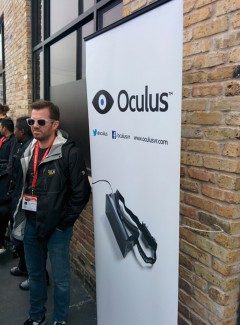 During my trip to South By Southwest, I was struck by how many filmmakers and producers were investigating 360 degree production and two of those were visual artists Félix Lajeunesse and Paul Raphael. I met them at the Oculus Loft, where guests could experience a short piece called “Strangers – A Moment with Patrick Watson”.
During my trip to South By Southwest, I was struck by how many filmmakers and producers were investigating 360 degree production and two of those were visual artists Félix Lajeunesse and Paul Raphael. I met them at the Oculus Loft, where guests could experience a short piece called “Strangers – A Moment with Patrick Watson”.
They were working closely with Oculus at the event, who were also present during the demo sessions. It’s no secret that Oculus are looking to position their VR platform as the place for video as well as gaming content. To this end, Felix and Paul have created ‘Once’, dedicated to creating immersive video experiences in VR.
SXSW was the first time I had seen seamless 3D 360 which was enhanced by the fact I was viewing it on an Oculus HD Prototype. The scene that was played out in front of me was simple, a guy playing a piano. But, unlike some attempts at stereoscopic 360 I had seen before, this demo was flawless in its stitching and composition. In fact, it was the most exciting Oculus Rift demo I have ever tried and my mind was instantly flooded with the possibilities.
Ahead of their first visit to Europe, where they will be presenting the same demo at the Inition VR Meetup on Monday April 14th, I caught up with the guys for a Road to VR exclusive interview:
—
Road to VR: What are your backgrounds?
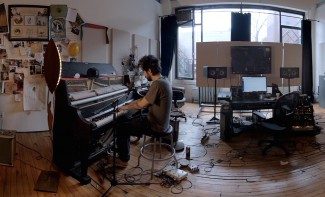 Felix: Paul and I are filmmakers and visual artists who have been collaborating for 7 years. Through the hand-in-hand exploration of art and technology, the focus of our work has been on the creation of immersive experiences in film, installations and stereoscopic art. Stéphane is a film and new media producer with extensive experience shooting in the Canadian Arctic and working with Inuit communities.
Felix: Paul and I are filmmakers and visual artists who have been collaborating for 7 years. Through the hand-in-hand exploration of art and technology, the focus of our work has been on the creation of immersive experiences in film, installations and stereoscopic art. Stéphane is a film and new media producer with extensive experience shooting in the Canadian Arctic and working with Inuit communities.
Road to VR: What motivated you both to explore 360 content?
Felix: Over the last few years, Paul and I worked extensively with 3D stereoscopic film. We believe stereoscopic film is a medium in itself, distinct from 2D cinema. In our view, the idea of immersion in stereoscopic art goes beyond the visual experience. It’s about creating an “open space” within the film, for the viewer’s imagination and awareness to complement the experience and narrative and really be a part of it. We used to call our 3D films “experiences of presence” before virtual reality came to our attention.
When Oculus released the first Rift prototype, we realized that this technology could open the door to the creation of experiences of full immersion, where the cinematic frame and screen conventions would no longer exist, and where the viewer and the content would come together into one unified space / reality. Building on the technological and conceptual knowledge we had acquired with 3D stereoscopy, we developed proprietary technology to capture reality at 360 degrees in 3D stereoscopy in a visually seamless way.
Road to VR: What is ONCE?
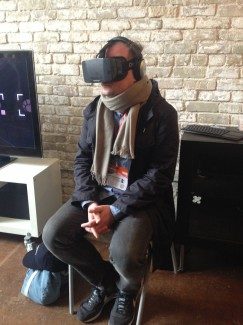 Felix: ONCE is dedicated to the creation of live-action virtual reality experiences. Our areas of interest with live-action virtual reality are not adrenaline-driven experiences. We believe 3D 360 live-action VR is an extraordinary medium to rediscover certain aspects of what shapes our reality: the experience of time and place and the presence of other human beings, for instance. Under the right circumstances, this medium can highlight the subtleties of reality with an astonishing level of emotional resonance.
Felix: ONCE is dedicated to the creation of live-action virtual reality experiences. Our areas of interest with live-action virtual reality are not adrenaline-driven experiences. We believe 3D 360 live-action VR is an extraordinary medium to rediscover certain aspects of what shapes our reality: the experience of time and place and the presence of other human beings, for instance. Under the right circumstances, this medium can highlight the subtleties of reality with an astonishing level of emotional resonance.
We are currently developing live-action VR projects in the fields of arts & entertainment, music, ethnography and healthcare.
The demo we were showing at SXSW is called “Strangers – A Moment with Patrick Watson”. In it, the viewer simply sits next to and spends a moment with musician Patrick Watson in his studio on a winter day in Montreal. It was produced by our company ONCE and directed by Paul and myself in collaboration with our friends at Clyde Henry. Apollo Studio in Montreal did the 360 binaural sound recording and production.
Road to VR: What has been the feedback from the Oculus guys and the public?
Felix: We had an amazing reaction from the team at Oculus. They were impressed at the seamless execution of our 3D 360 video technology and really appreciated our artistic and conceptual vision of the medium.
Feedback from the public was wonderful. We designed the VR experience we presented as a “personal moment” that the viewer is free to watch for the time he wishes, and free to engage with at the depth he wishes – without ever feeling like he is missing out on anything. Many were surprised by the emotional intensity such a simple experience of presence and human proximity could provide.
Road to VR: Who are you talking to with regard to exploiting this technology?
Felix: The technology we have developed along with our approach to the medium has attracted the attention of companies and artists in various fields, including the film and music industries, the contemporary art world, the health sector and experiential marketing agencies. Although we cannot publicly announce anything yet, we are moving forward with a slate of very interesting projects.
Road to VR: How are you positioning yourselves?
Felix: We are content producers working with proprietary technology. We create/produce our own content and also participate as producers to external productions where we provide technology and creative consultancy.
Road to VR: I am often asked about 3D 360 and you guys have cracked it! Do you intend to make your technology commercially available?
Felix: Yes we have made a lot of headway, but a commercial release is not in our immediate plans. We want to explore the medium and optimize the technology and post-production workflow first.
Road to VR: What resolution could you reach with your technology and is it a time consuming post production process?
Felix: We currently work in 6K (average resolution of the global file). The post-production process is getting faster and faster as we move forward and develop new tools and processes. 3D 360 live-action VR isn’t a plug-and-play process, at least not for now. Every environment and scene captured is different, and an understanding of all the variables is necessary in order to achieve high-quality results.
Road to VR: How is your technology different to other 360 capture devices such as the Panocam 3D?
Felix: It is of primary importance for ONCE that live-action 3D 360-degrees experiences be as effortless and real as an actual experience of reality. Any technical defect or irregularity can easily ruin the impression of presence. Technical imperfections are to a certain extent acceptable in cinema and television, but with live-action virtual reality, visual anomalies work against the credibility and power of a piece and prevent the viewer from completely surrendering to the experience.
Road to VR: Do you think highly immersive 3D 360 content poses any social dangers?
Felix: The past decades introduced humanity to television, the internet, video games, intelligent mobile devices and social media. All of these platforms, mediums and technologies could alternately be seen as ways to expand and enhance human experience, connectivity and awareness, or at the other end of the spectrum, as disruptive forces that encourage individualism, reclusion and consumerism. I guess both these perceptions, even if they read as antithesis to one another, are equally true and valid to some extent. Polarized perceptions of similar nature will probably also apply to virtual reality. For some people, it will be a portal for discovery and possibilities, and for others, a way to escape reality and find shelter in an artificial one.
—
Our thanks to Felix for taking the time to talk to us. You can find more information on the team and their work here.

